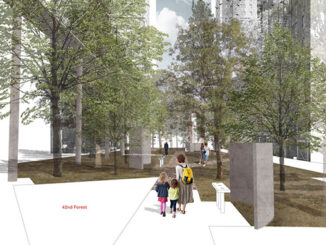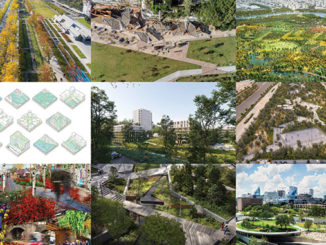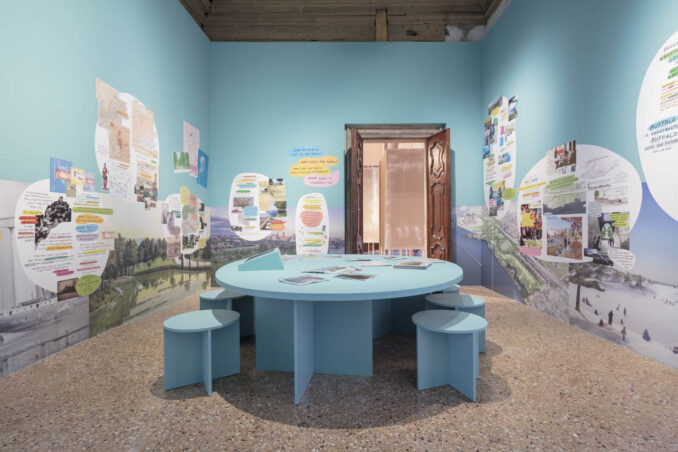
The University at Buffalo School of Architecture and Planning is once again putting Buffalo’s urban design on the global stage. After debuting a documentary film on the city at the 2018 Time Space Existence exhibition in Venice, Italy, the school returns to the international architecture event this month to showcase the world-class park emerging on Buffalo’s waterfront.
Ralph C. Wilson, Jr. Centennial Park — a public-private initiative to transform the former LaSalle Park into an enchanting landscape on the eastern tip of Lake Erie — is one of the city’s highest-profile development in decades.
The School of Architecture and Planning’s exhibition in Venice will zero in on the multiyear civic planning process that is shaping the park’s design. Since 2018, the school and its UB Regional Institute research center have engaged more than 2,000 citizen voices in “Imagine LaSalle,” a community visioning process to drive the park’s future with broad and meaningful public input. The Imagine LaSalle is part of the “Buffalo Constructing Buffalo: From Olmsted to Van Valkenburgh” which opened on May 22 at Palazzo Mora in Venice. The international Time Space Existence exhibition is organized by the European Cultural Centre and held in conjunction with the Venice Architecture Biennale, the world’s leading architectural exhibition. Time Space Existence runs through November.
The park’s redevelopment is the result of an historic gift to the city by the Ralph C. Wilson, Jr. Foundation, in partnership with the Community Foundation for Greater Buffalo. Michael Van Valkenburgh Associates, a New York-based landscape architecture firm, has led the park’s design.
An ambitious civic effort
The exhibition interprets the civic planning process behind the park, the foundation of city plans that informed it, and the best practices research that inspired it. That process has been guided by the faculty and students of the School of Architecture and Planning, whose engagement with the city dates to the school’s founding in 1969.
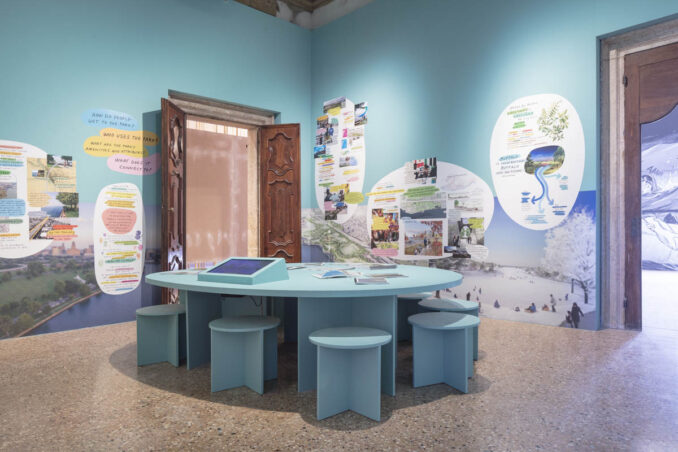
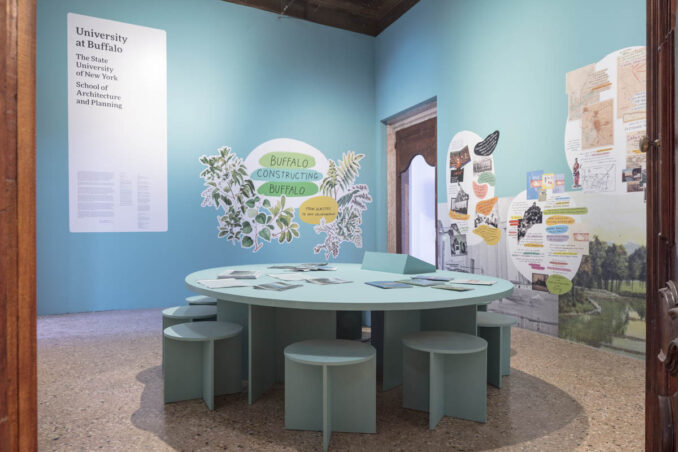
“The vision of the Ralph C. Wilson, Jr. Foundation has always been to make this a grand park, not only in its design but in its authenticity as a park of the people,” says School of Architecture and Planning Dean Robert G. Shibley, who led the Imagine LaSalle effort with the UB Regional Institute and has played a key role in developing much of the city’s planning framework.
“Buffalo will stand apart for this park because every design gesture, landscape element and programming decision began with the aspirations of our community,” added Shibley, curator of the exhibition in Venice. “It’s a process that has evolved over decades in line with a city that elevates design in service to the public. It is the next chapter in a decades-long narrative of ‘Buffalo constructing Buffalo.’”
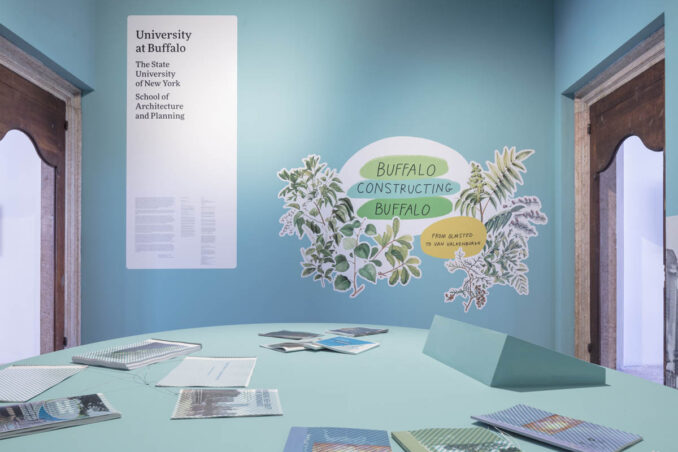
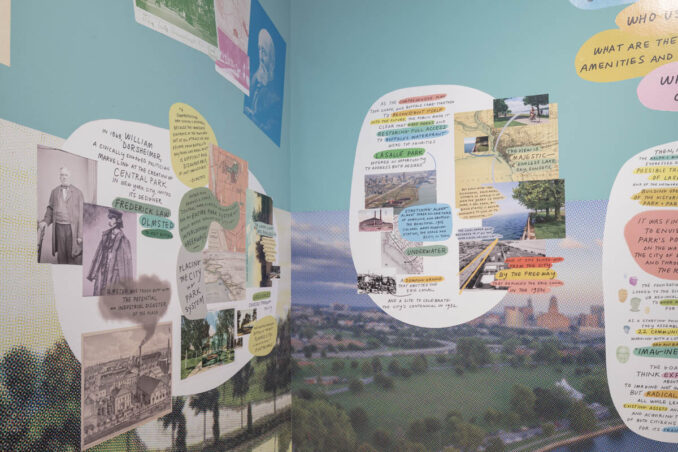
Imagine LaSalle has been an intensive and ambitious civic effort. Over two-plus years, a team from the UB Regional Institute hosted community workshops, conducted survey research in seven languages, and organized design charrettes with youth. They toured a focus group of neighborhood ambassadors through 21 of the nation’s best urban parks.
That chorus of voices was then synthesized into a community vision report outlining core design principles for the park, from the technical (get smart about parking) to the cultural (strengthen neighborhood connections) to the aesthetic (create a ‘great lawn’ for recreation and events). The report has served as a guiding force for the project, directly informing MVVA’s conceptual designs for the park.
Among the park’s signature features are a berm to block noise from the I-190, an inviting new bridge to the neighborhood across the interstate, a sledding hill and meadow, reinvigorated flora including 2,500 new trees, new ways to meet the water, a magical new playground for children, and connections to surrounding parks and trails.
(The exhibition’s representations of the park’s design are a snapshot of the process at various points in time. Designs are subject to further refinement as the project works through regulatory review). Construction is expected to start in 2022.
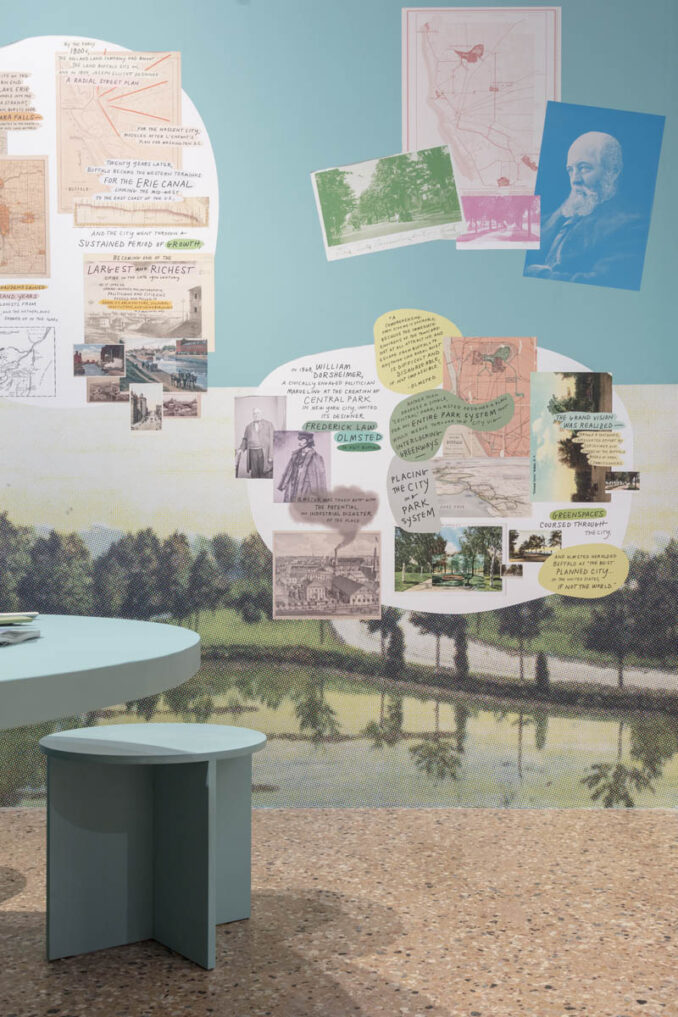
“The park has long served as a gathering place for Buffalonians from all walks of life and backgrounds. As a civic process, Imagine LaSalle has been intentional in bringing together the diverse base of park users and nearby residents so that the park’s transformation is shaped by the community’s vision for what a world-class waterfront park could be,” says Bart Roberts, an associate director of the UB Regional Institute and Imagine LaSalle project lead.
Buffalo-based visual artist brings story to life
The story of the park – and “Buffalo Constructing Buffalo” – is presented in the Venice exhibition as a series of illustrated “story boards” created by Buffalo-based visual artist Ariel Aberg-Riger.
“As a visual storyteller, I use both text and found historical images and artifacts to bring narratives to life,” says Aberg-Riger, whose graphic narratives have covered topics from affordable housing to domestic violence and have been exhibited and published internationally. “My approach aims to slow readers down so they can truly immerse themselves in the story and wander through the past. Buffalo is such a beautiful city, and exploring the history and legacy of its parks and greenways was fascinating,” she says.
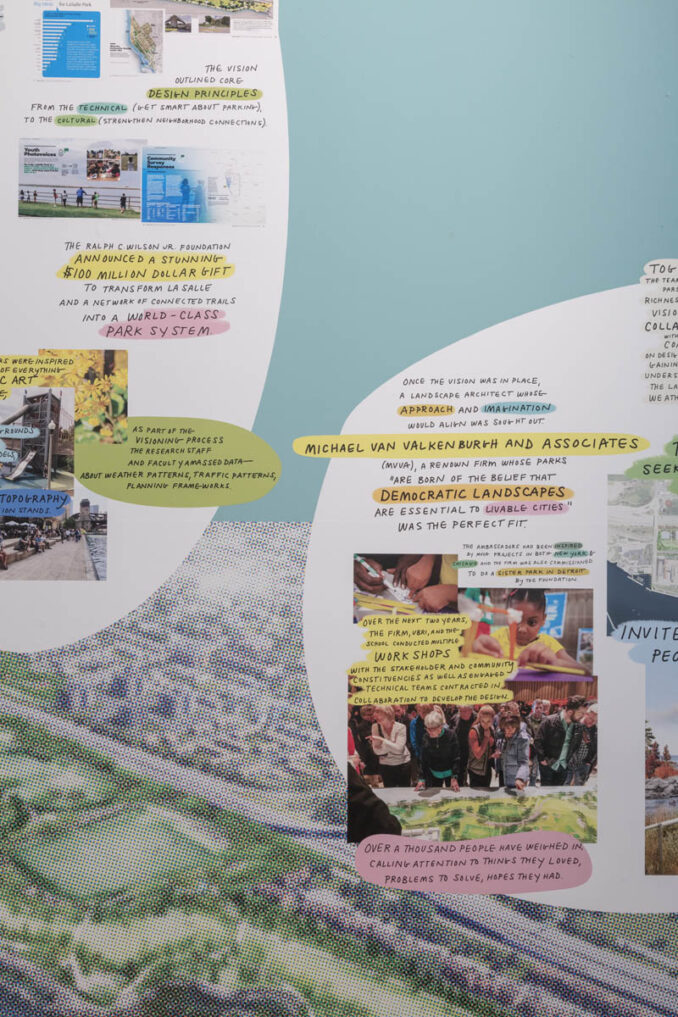
Julia Jamrozik, an assistant professor of architecture at UB, designed the exhibit in collaboration with Aberg-Riger and UB architecture students Lukas Fetzko, Stanicka Mathurin, Rutuja Shinde and Christopher Sweeney. “The idea behind the exhibit design is to try to show the complexity of the story while at the same time facilitating a coherent yet memorable visitor experience.”
Aberg-Riger’s visual narrative, along with documentation of the exhibition, are available at http://ap.buffalo.edu/buffaloconstructingbuffalo.html
Image Credits: ©gerdastudio

